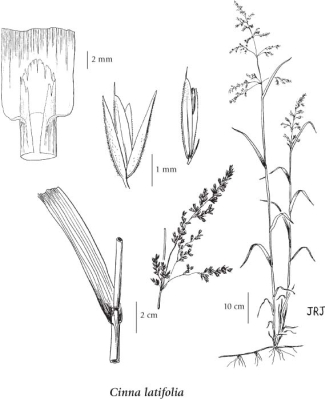Cinna latifolia (Trevis. ex Goepp.) Griseb.
nodding wood-reed (drooping woodreed; wood reedgrass)
Poaceae (Grass family)
Introduction to Vascular Plants
nodding wood-reed (drooping woodreed; wood reedgrass)
Poaceae (Grass family)
Introduction to Vascular Plants
